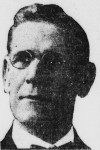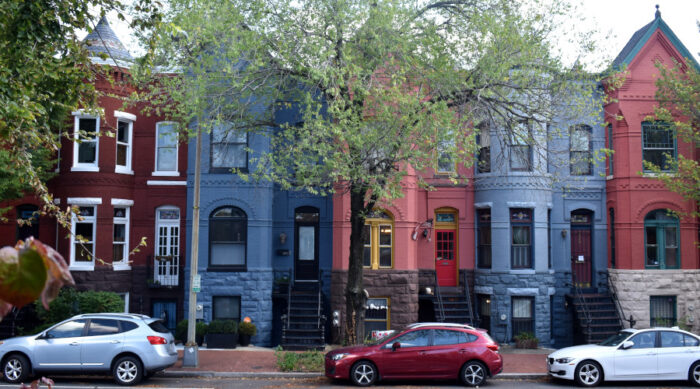
Charles Gessford is one of those people who was important in making the Capitol Hill neighborhood what it is today. The many houses he build between 1881 and his death in 1894 continue to define the architectural landscape that is our part of the city. It would appear that someone who has been so prolific would also have left his mark on the historic record, and allow us to learn a little more about the man who shaped Capitol Hill.
This is not the case, however. The newspapers never bothered to write much about Gessford, even after he passed away, nor were there any attempts celebrate his achievements later.
Charles Gessford was born in Maryland in 1831. As a young man, he became in carpenter in Baltimore, but in the early 1850s, he moved to Washington, where he married Elizabeth Evans on October 5, 1852. Over the next years, they would have a whole slew of children, starting with Ida Virginia in 1856. (that’s her husband, William J. McClure above) For much of this time, Gessford worked as a carpenter, occasionally being hired by the federal government to do work.
Around 1880, this begins to change. Soon, Gessford gets regular mentions in the fine print of the newspapers of the day: Buying property, applying for building permits, selling properties – most of these on Capitol Hill, which also became his home in the late 1880s.

One area where he is conspicuously absent is in the courts. While others – even those who were generally considered upright citizens – seem to have spent a fair bit of time either fending off or pushing lawsuits, Gessford avoided this for the most part.
His luck in this regard ran out in 1893. In the course of the financial crash of that year, Gessford found himself forced to pump money into one of his suppliers, the “grate, mantel and tile dealer” Sotheron K. Spaulding. Unfortunately, instead of receiving profits from the business, he found that Spaulding was “working the partnership for his own especial benefit,” as the Washington Post of September 17 of that year wrote. Gessford applied to equity court for redress. Whatever relief he was able to gain from this action did not do much for him. On February 1, 1894, Gessford died. Three days later, the Washington Post printed the following:
Mr. Charles Gessford died Wednesday night of paralysis at his residence at the corner of Seventh street and South Carolina avenue, after an illness of two weeks, in the sixty-third year of his life. He was a well-known real estate man, and much interested in city property, having erected a number of handsome residences.
Most of the rest listed the Masonic orders he was a member of and concluded with: “The interment will be at Congressional Cemetery.”
But, as sometimes happens, his name continued to appear regularly in the records of the day. At first just because the fight over his will was long and protracted, but then because of the many subdivisions that he made of properties on the Hill and across the city. When describing properties within these in later years, his name is listed to make sure people know which one is meant.
Even later, his name was attached to the Philadelphia Row houses on 11th Street Southeast, in spite of his never having been involved in their construction. Nonetheless, from an article in the Evening Star in 1960, this falsehood made its way into numerous books about Capitol Hill.
Most people, however, know him only as the man who gave his name to one of the most famous alleys of Capitol Hill: Gessford Court.
More on the Gessford family in future weeks.
